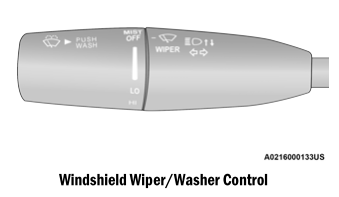Dodge Charger: VEHICLE LOADING / Gross Vehicle Weight Rating (GVWR), Gross Axle Weight Rating (GAWR)
Gross Vehicle Weight Rating (GVWR)
The GVWR is the total allowable weight of your vehicle. This includes driver, passengers, and cargo. The total load must be limited so that you do not exceed the GVWR.
Gross Axle Weight Rating (GAWR)
The GAWR is the maximum capacity of the front and rear axles. Distribute the load over the front and rear axles evenly. Make sure that you do not exceed either front or rear GAWR.
WARNING!
Because the front wheels steer the vehicle, it is important that you do not exceed the maximum front or rear GAWR. A dangerous driving condition can result if either rating is exceeded. You could lose control of the vehicle and have a collision.
 Vehicle Certification Label
Vehicle Certification Label
Your vehicle has a Vehicle Certification Label affixed to the drivers side B-pillar
or the rear of the driver’s door.
The label contains the following information:
Name of manufacturer
Month and year of manufacture
Gross Vehicle Weight Rating (GVWR)
Gross Axle Weight Rating (GAWR) front
Gross Axle Weight Rating (GAWR) rear
Vehicle Identification Number (VIN)
Type of vehicle
Month, Day, and Hour of manufacture (MDH)
The bar code allows a computer scanner to read the VIN...
 Overloading
Overloading
The load carrying components (axle, springs, tires, wheels, etc.) of your vehicle
will provide satisfactory service as long as you do not exceed the GVWR and the
front and rear GAWR...
Other information:
Dodge Charger 2011-2025 Owner's Manual: Steering Wheel Audio Controls
The remote sound system controls are located on the rear surface of the steering wheel at the three and nine o’clock positions. The right-hand control is a rocker-type switch with a push button in the center and controls the volume and mode of the sound system...
Dodge Charger 2011-2025 Owner's Manual: Front Defrost Button, Rear Defrost Button
Front Defrost Button Press and release the Front Defrost button on the touchscreen, or push and release the button on the faceplate, to change the current airflow setting to Defrost mode. The Front Defrost indicator illuminates when Front Defrost is on...
Categories
- Manuals Home
- Dodge Charger Owners Manual
- Dodge Charger Service Manual
- Opening And Closing The Trunk
- To Disarm The System
- PARKING BRAKE
- New on site
- Most important about car
WINDSHIELD WIPERS AND WASHERS
The windshield wiper/washer controls are located on the multifunction lever on the left side of the steering column. The front wipers are operated by rotating a switch, located on the end of the lever.

